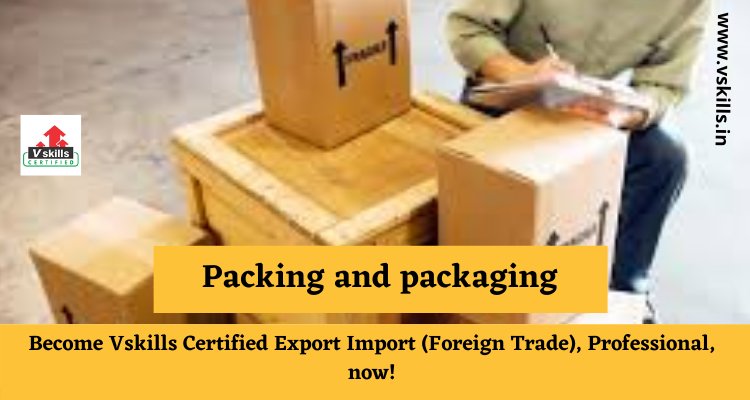Packing and packaging
Let’s learn about Packing and packaging. One of the main tasks facing any exporter is to make sure that goods reach their buyers and their final consumers in perfect condition. The key is to get export packaging and labeling right. There is a huge range of packaging options – from cartons and drums to wooden pallets and metal containers. As well as making sure goods are securely packaged, one also should check that they’re appropriately marked or labeled to ensure they’re handled properly while in transit.
Export Packaging
Export packaging is also often referred to as transport packaging, which is one of the three main types of packaging that are likely to be needed for exported goods.
- Transport or export packaging is the outermost layer of packaging and is designed to protect goods during transit. Examples include wooden crates, metal drums, and plastic shrink-wrapping
- Outer packaging is an intermediate layer of packaging, which often also serves a retail-promotion purpose. An example would be a box containing multiple units that double as a retail display fixture and can be placed directly on a shop shelf, as is common with many convenience foods
- Sales packaging is the immediate layer of packaging around goods – the packaging that remains when the goods reach their end-user. Examples include the bottles in which beverages are contained or the boxes many electronics items are sold in. Sales packaging often also serves a marketing purpose by containing prominent branding images and information.
Export packaging options
The main types of export packaging include
- Loose or unpacked – a common option for large items such as heavy vehicles. Making sure they’re stowed securely is more important than adding a layer of protective packaging
- Boxes or crates – one of the most prevalent options. They are often stacked on pallets and shrink-wrapped for stability. Less durability is required if goods are also containerized
- Drums usually made of metal or plastic – commonly used for transporting liquids and powders or goods that need to be kept dry
- Wrapping – often used with goods stacked on pallets, wrapping – such as shrinkwrap or foil – both add to stability and protects goods
- Pallets – allow smaller packing units such as boxes and cartons to be grouped together. They allow easy mechanical transporting (e.g. forklift trucks), which eases the process of loading, unloading, and warehousing



